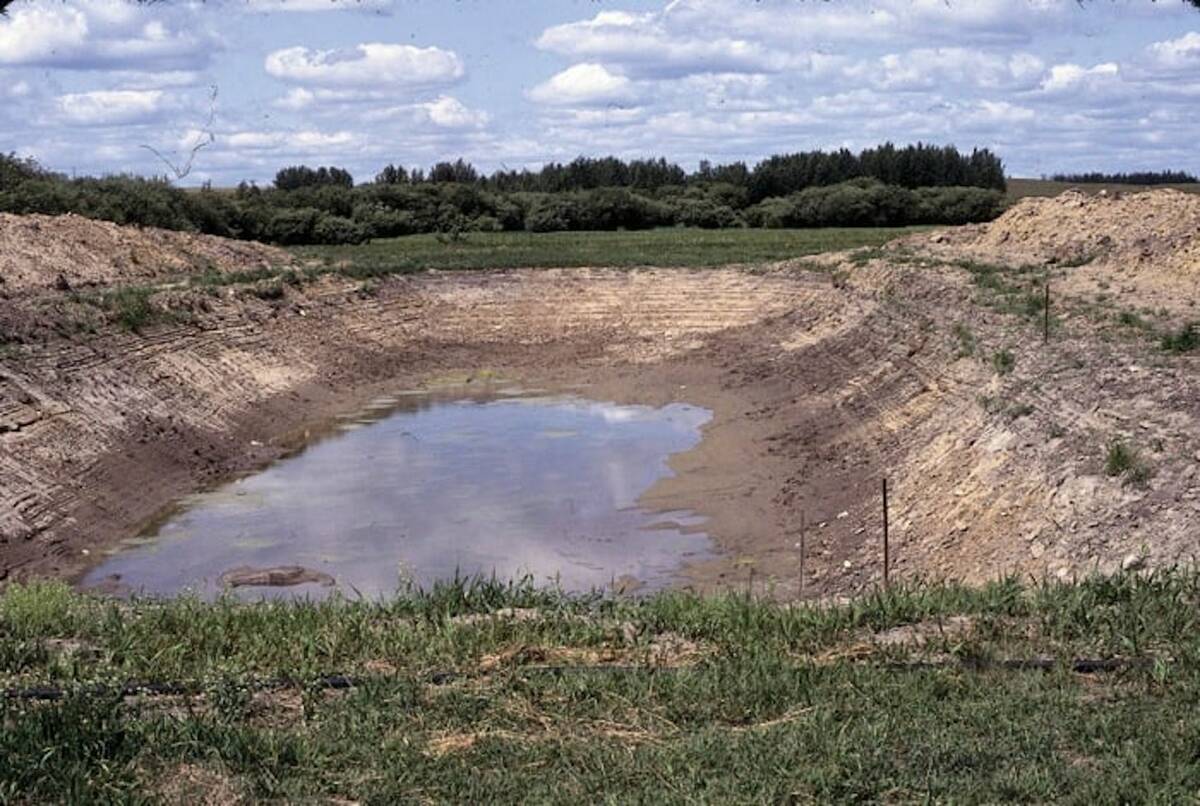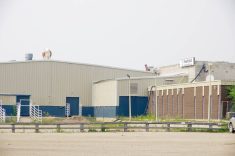AIRDRIE, Alta. – Liz was a dappled heifer with an unknown family tree
when she caught the eye of the Raines family 40 years ago.
The calf eventually became the mother of a strain of uniquely coloured
black and white cattle called Mountaineer Breton Spots.
Liz was unusual in that her blue-black and white colouration was
symmetrical. The Raines suspected she was mostly Shorthorn with a dash
of Holstein.
She grew into a big-horned cow weighing about a ton. She was bred to an
Read Also

Dry summer conditions can lead to poor water quality for livestock
Drought conditions in the Prairies has led to an decrease in water quality, and producers are being advised to closely monitor water quality for their animals.
Angus bull and her first calf carried her colour pattern and also
exhibited good beef qualities.
Chuck and Jean Raines took over the breeding program from Chuck’s
parents in 1973, breeding for colour and durability.
“We’ve got these cattle where we have a very high degree of
repeatability,” Chuck Raines told a recent tour of his Airdrie farm
north of Calgary.
“We’re still trying to solve the colour riddle.”
Breeding for colour is tenuous at best and they are working with a
University of Saskatchewan beef geneticist to understand what is
happening.
They found the spotted colour is retained with certain Angus bulls.
They get three distinct colour patterns. A third appear as spotted, a
third are white with black points on the muzzle, ears and feet, and the
rest are black.
They keep the spotted and white cows as herd replacements, and the
black cows are bred to Angus bulls and sold as bred heifers.
The Raines have continued breeding the offspring to Angus bulls, with
the majority of the progeny either polled or carrying slight scurs,
which are small, loosely attached horns.
The next step was to performance test the Mountaineer Breton Spots
against the Raines’s black baldie commercial herd that was bred back to
Charolais bulls.
The spotted cattle match the three-way cross herd for total beef
produced. They also exhibited outstanding maternal instincts.
Raines has decided to breed them as a moderate-sized maternal breed
with strict criteria.
“We had a fair amount of experience with commercial cattle prior to
starting this project so we wrote some rules,” he said.
Heifers and bulls must breed as yearlings, and heifers must calve
unassisted.
Cows must wean calves indexing 90 percent or better without creep feed.
Cow must have a lifetime production of 6,000 pounds of calf weaned. The
cows receive little grain and have developed into easy-fleshing animals
on lesser quality forage.
The program is part of a lifelong interest in livestock breeding that
included hogs and beef cattle.
Now the Raines want to find someone to take over the program and
eventually register the cattle as a new breed.
“I don’t think we’re going to do it in our lifetime. Someone has got to
take what we’ve done in research and take it to breed status,” Raines
said.

















